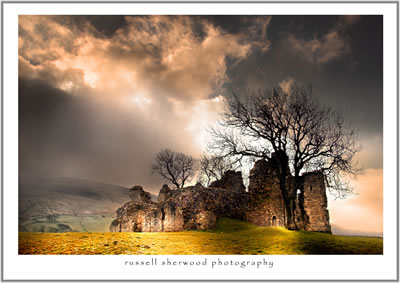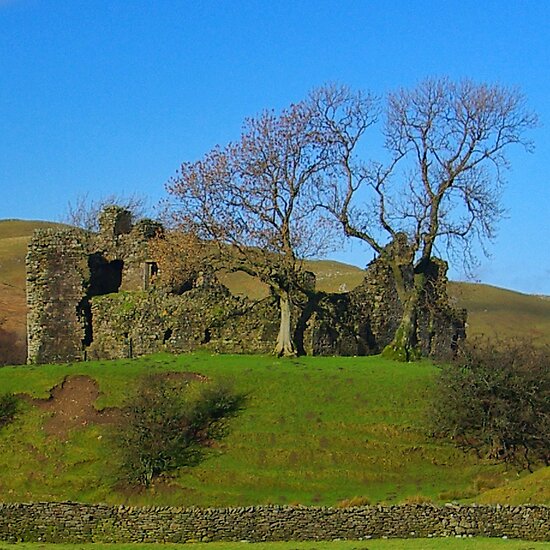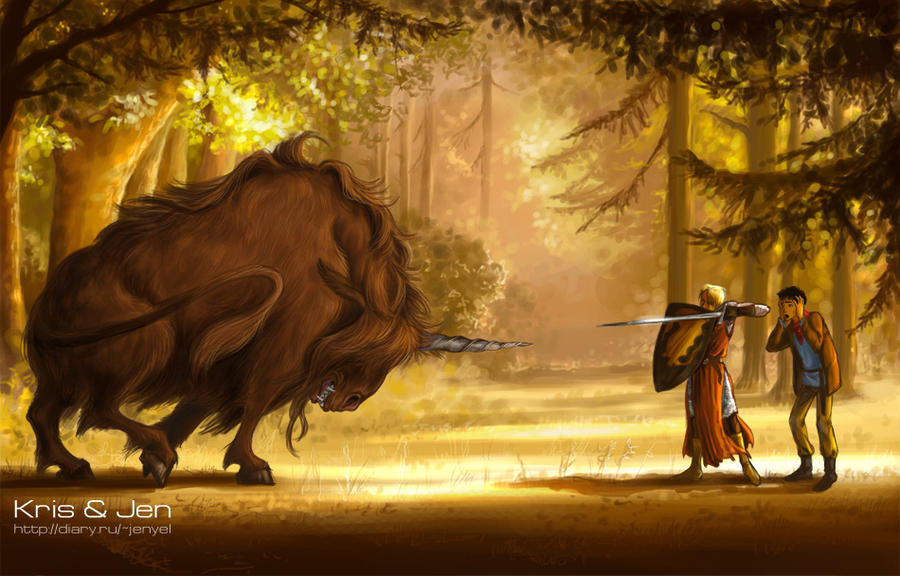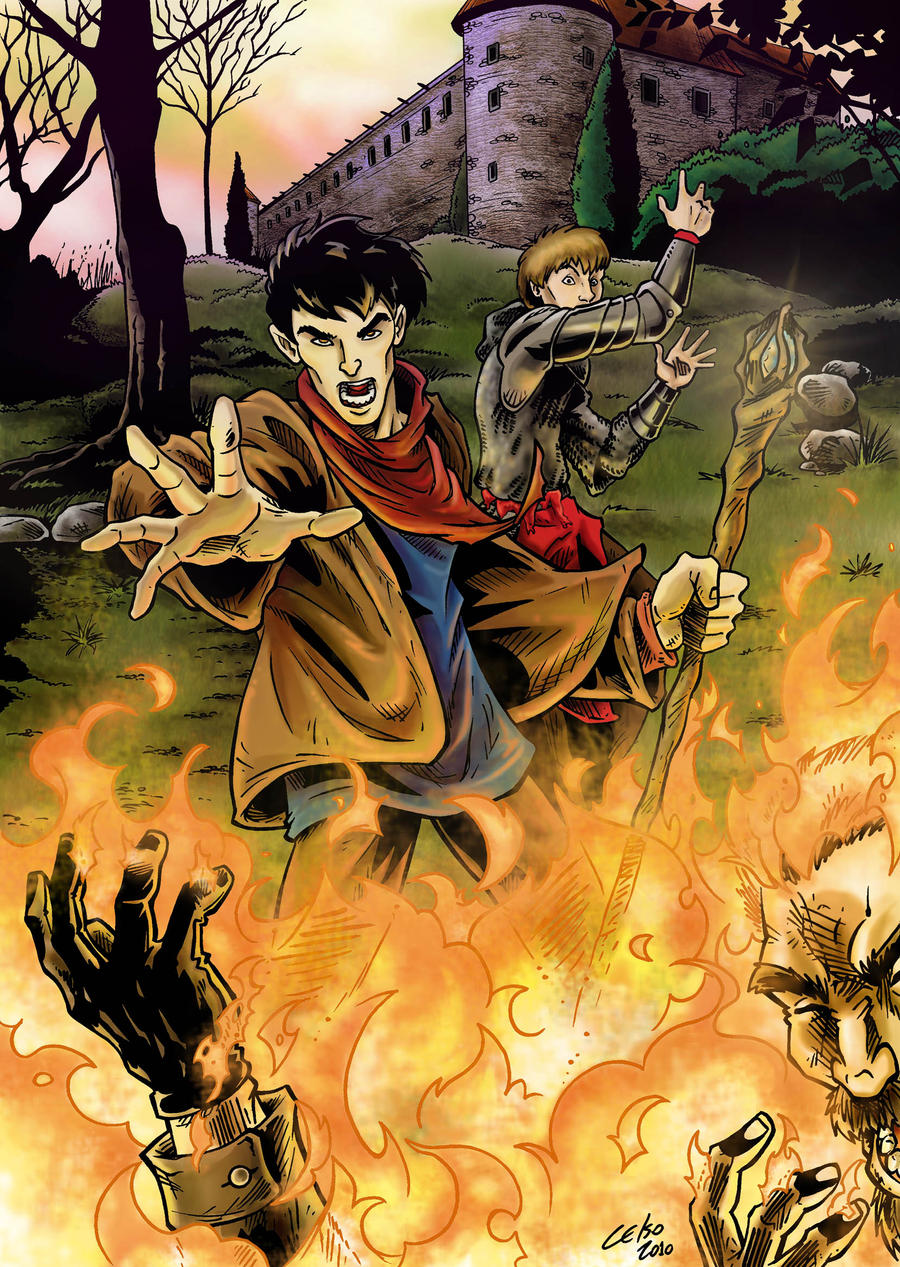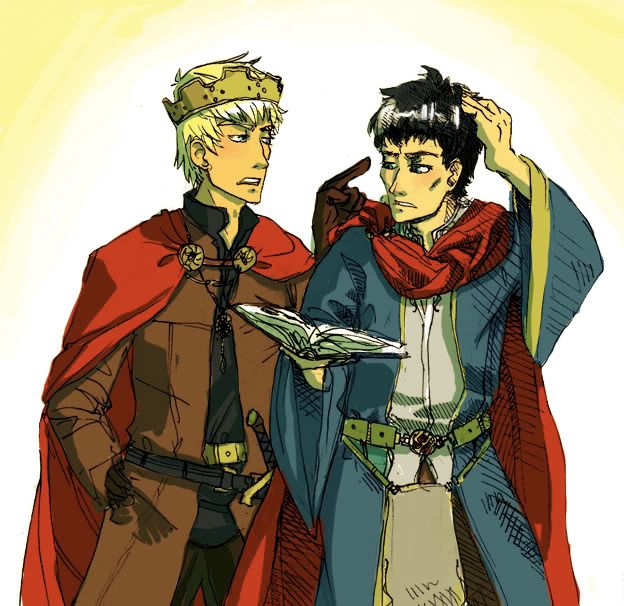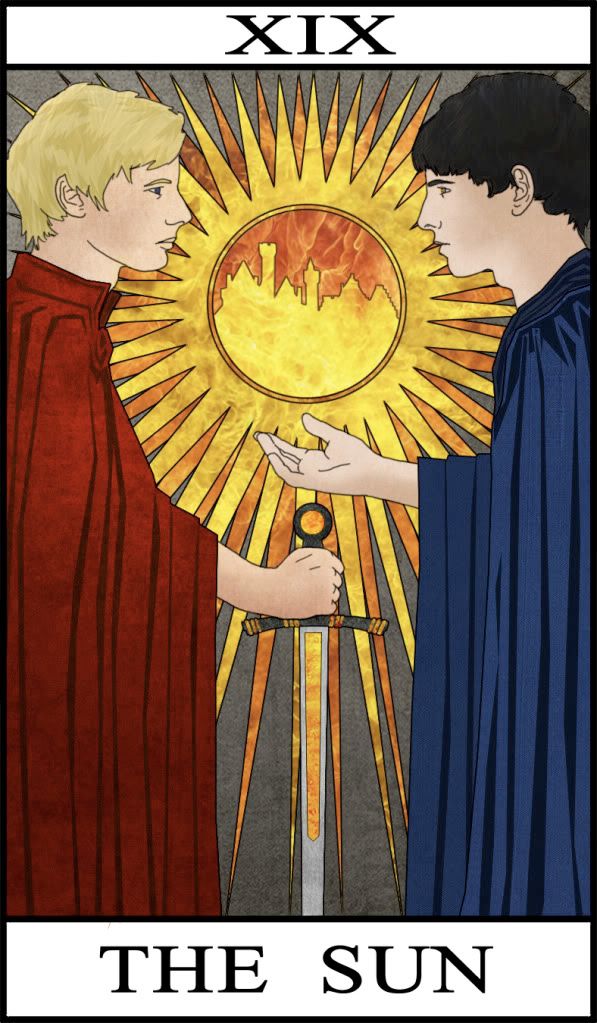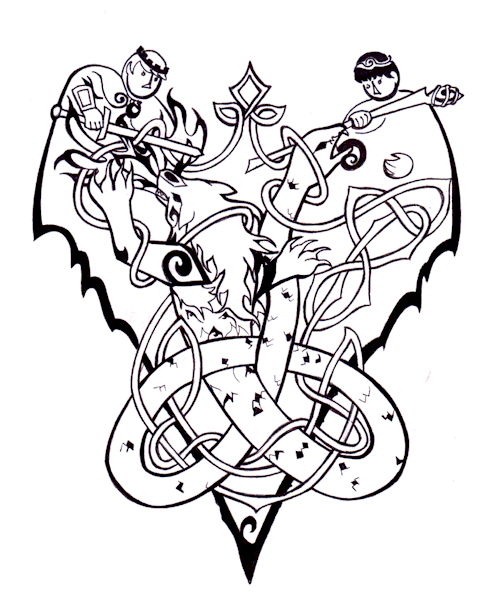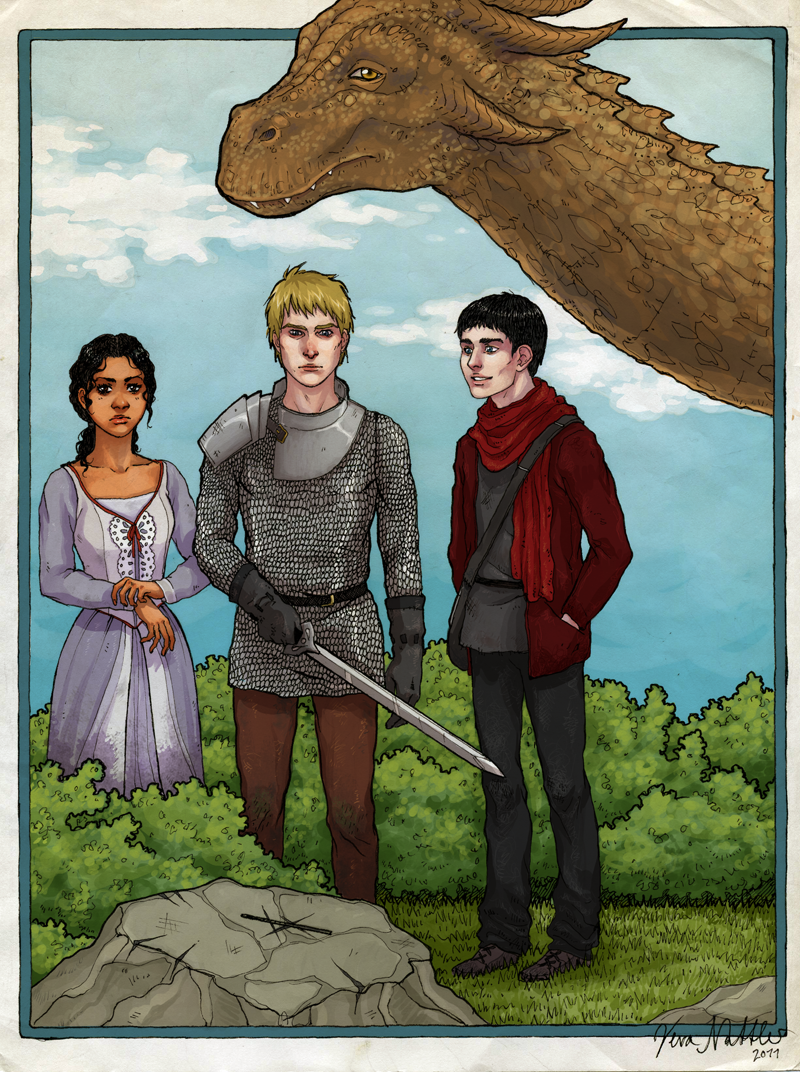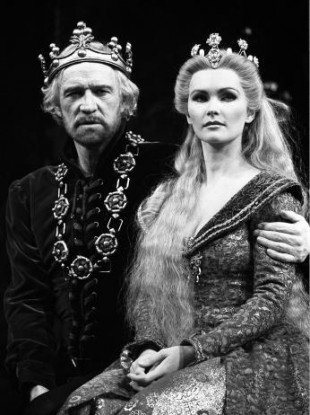The first comprehensive story of King Arthur was written Geoffrey of Monmouth, a Welsh Monk in 'Historia Regum Britanniae' which was completed in around 1138.
Monmouth described how, after the fall of the Roman Army, Britain went thought an unstable period of invasion by barbarians before King Arthur and the Knights of the Round Table brought peace.
After the death of his father Uther Pendragon, Arthur became king at a young age and forced the Saxons – who were assisted by the Picts and Scots – to promise to leave Britain.
He was a popular King, who became known for his outstanding courage and generosity. Lands were given back to their rightful owners and churches were rebuilt.
King Arthur's new ethos of courtliness, nobility, and selfless bravery became established in common life, and his influence began to extend itself to Europe.
The Kingdom of Britain had by now risen above all others, in its riches and in its chivalric codes of conduct. Knights had become famed for their personal bravery and wore armour and colours of their own style.
Sir Lancelot
Sir Lancelot is regarded as the greatest and most chivalrous of King Arthur's knights. He was the son of King Ban of Benoic and Queen Elaine, he is known as Lancelot of the Lake or Lancelot du Lac because he was raised by Vivien, the Lady of the Lake.
Sir Lancelot first appears in Arthurian legend in 'Le Chevalier de la Charrette', one of a set of five Arthurian romances written by the French poet Chretien de Troyes
His adventures include the rescue of Queen Guinevere from Méléagant, a failed quest for the holy grail, and a further rescue of Guinevere after she is condemned to be burned at the stake for adultery with him.
Sir Lancelot's relationship with the real Guinevere ultimately brings about the destruction of King Arthur's realm.
Merlin
The standard depiction of the character first appears in Geoffrey of Monmouth's Historia Regum Britanniae and is based on an amalgamation of previous historical and legendary figures.
Geoffrey combined existing stories of Myrddin Wyllt (Merlinus Caledonensis), a North Brythonic prophet and madman with no connection to King Arthur, with tales of the Romano-British war leader Ambrosius Aurelianus to form the composite figure he called Merlin Ambrosius (Welsh: Myrddin Emrys).
Merlin's traditional biography casts him as a campion; born of a mortal woman, sired by an demand, the non-human from whom he inherits his supernatural powers and abilities.
In the most well known legend Merlin brings Arthur to the sword in the stone and helps him regain the kingdom.
Queen Guinevere
Geoffrey of Monmouth wrote that Guinevere was descended from a noble family of Romans and is "the loveliest woman in all the island
In later takes she is the daughter of Leodegrance, previous owner of the Round Table, which she brings, together with one hundred knights, as her dowry when she marries Arthur.
In Mallory's Le Morte d'Arthur it describes how Arthur first met Guinevere while rescuing her father Leodegrance and fell in love with her at first sight.
Merlin warns Arthur that Guinevere is not wholesome enough to be his wife, and that she would fall in love with Lancelot.
Guinevere is abducted in various stories. In Le Chevalier de la Charrette she is kidnapped by Méléagant and rescued by Lancelot.
heir affair is exposed by two of King Lot's sons, Agravain and Mordred, and Lancelot flees for his life while Arthur reluctantly sentences his queen to burn at the stake.
Knowing Lancelot and his family will try to stop the execution, Arthur sends many of his knights to defend the pyre, though Gawain refuses to participate.
Lancelot arrives and rescues the queen, and in the course of the battle Gawain's brothers Gaheris and Gareth are killed, sending Gawain into a rage so great that he pressures Arthur into war with Lancelot.
When Arthur goes to France to fight Lancelot, he leaves Guinevere in the care of Mordred, who plots to marry the queen himself and take Arthur's throne.
Hearing of the treachery, Arthur returns to Britain and slays Mordred at Camlann, but his wounds are so severe that he is taken to the Isle of Avalon. Guinevere meets Lancelot one last time, then spends the rest of her life in a convent.
Morgan le Fay
Mrogan le Fay is a powerful sorceress in Athurain legend.
She is said to be the daughter of Arthur's mother, the Lady Igraine, and her first husband, Gorlois, Duke of Cornwall, so that Arthur is her half brother.
The early accounts of Geoffrey of Monmouth and Gerald of Wales refer to Morgan in conjunction with the Isle of Apples (later Avalon) to which the fatally-wounded Arthur was carried.
To the former she was an enchantress, one of nine sisters, while to the latter she was the ruler and patroness of an area near Glastonbury and a close blood-relation of King Arthur. In the early romances of Chretien de Troyes, also, she figures as a healer.
Though in later stories she becomes an adversary of the Round Table when Guinevere discovers her adultery with one of her husband's knights, she eventually reconciles with her brother, and even retains her original role, serving as one of the four enchantresses who carry the king to Avalon after his final battle at Camlann.
Sir Gawain
Gawain figures prominently in many romances. In the English tradition, however, it is much more common for Gawain to be the principal hero and the exemplar of courtesy and chivalry, as he is in Sir Gawain and the Green Knight and the other Arthurian romances.
In Malory's Le Morte d'Arthur, however, he has a role similar to that in the French romances, in that Lancelot is the principal hero.
The accidental death of Gawain's brothers at Sir Lancelot's hands caused Gawain, one of the mightiest warriors at court, to become the bitter enemy of his once greatest friend.
He was mortally wounded in a fight with Lancelot who, it is said, lay for two nights weeping at Gawain's tomb. Before his death, Gawain repented of his bitterness towards Lancelot and forgave him.
Sir Geraint
he eldest son of King Erbin of Dumnonia who was a Knight of Devon. After the death of his wife, Prince Geraint spent much time at King Arthur's Court, looking for adventure.
It was during this period that he encountered the Sparrowhawk Knight and came to marry Lady Enid of Caer-Teim (Cardiff), a story told in the ancient tales of "Erec (alias Geraint) & Enid" and "Geraint mab Erbin".
Sir Geraint restored Sir Yniol all of his possessions and then married his beautiful daughter, Lady Enid.
Later Geraint heard Enid bewailing his sloth as a knight; he was stung with shame and mistakenly believed Enid to be unfaithful to him. He took her on a journey through a series of trials until she convinced him of her constancy. They returned and lived in happiness for the remainder of their lives.
Sir Galahad
Galahad was the natural son of Lancelot. His name may be of Welsh origin or come from the place name Gilead in Palestine. His mother was Elaine, and he was placed in a nunnery as a child, being that the abbess there was his great aunt.
One day a sword in a stone was seen in a river by Arthur's knights, and it was said that only the world's best knight could pull out the sword.
Galahad was led into Arthur's court where he sat in the Siege Perilous and then drew the sword out. It was later on when the Grail appeared in a vision at Arthur's court that Galahad was one of the three knights chosen to undertake the Quest for the holy grail.
He was given a white shield, made by Evelake, with a red cross which Joseph of Arimathea had drawn in blood. In the course of the Quest he joined up with Percivale, Bors, and Percivale's sister.
On board Solomon's ship, Galahad obtained the Sword of David, and after the death of Percivale's sister the trio split up for a while and Galahad travelled with his father.
